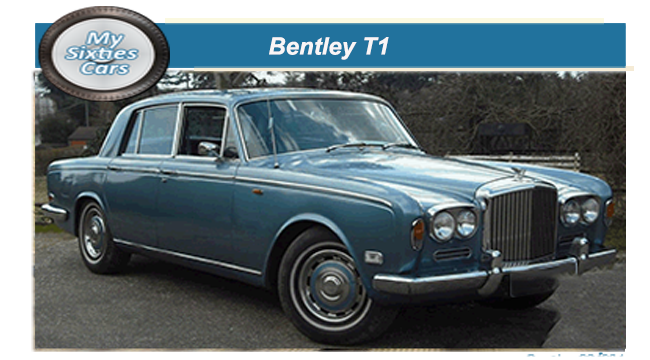
The third post-war generation of Bentleys, the T-Series, was released in 1965, once again were almost an exact copy of their Rolls Royce equivalent.
The only difference between the brands was the radiator grille, wheel trims and badging- mechanically the two cars were identical.
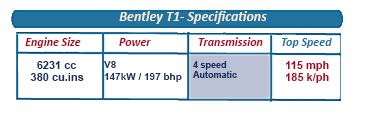 Designed by a team under Chief Engineer Harry Grylls and styled by John Blatchford, the new model's crisp and modern lines created something of a sensation.
Designed by a team under Chief Engineer Harry Grylls and styled by John Blatchford, the new model's crisp and modern lines created something of a sensation.
The T-Series, or T1 as it soon became known, was a slightly shorter, much lower, and sleeker model than the previous S-series cars, while, thanks to some resourceful designing, retained the same amount of internal accommodation while offering increased luggage space.
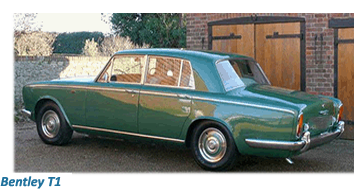 Other differences between the two included a different grille with no bonnet mascot on the Bentley, as well as restyled wheel trims and no long-wheelbase option.
Other differences between the two included a different grille with no bonnet mascot on the Bentley, as well as restyled wheel trims and no long-wheelbase option.
Only the grille was externally different from the Rolls-Royce Silver Shadow.
What was certain was that the Bentley T1 and its Rolls Royce counterpart, the Silver Shadow, bore absolutely no resemblance to its predecessor, the B3 Saloon, with every single component used in its construction being entirely new, with the notable exception, the cars' 6230cc V8 engine and automatic transmission.
The T1's independent front and rear suspension — at the rear by semi-trailing arms and coil springs — also involved self-levelling dampers.
![]()
Power steering was standard, as were disc brakes on all four wheels. Behind the four headlamp nose, the styling was simple, but inside the cabin, there was wall to wall leather, deep-pile carpets and wood, all shaped, cosseted and assembled by hand at the Crewe factory.
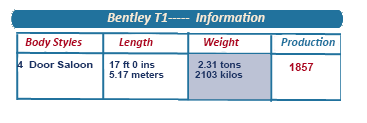 Replacing the standard steel-bodied Rolls-Bentley saloons — the other chassis continuing unchanged as produced for specialist coachbuilders.
Replacing the standard steel-bodied Rolls-Bentley saloons — the other chassis continuing unchanged as produced for specialist coachbuilders.
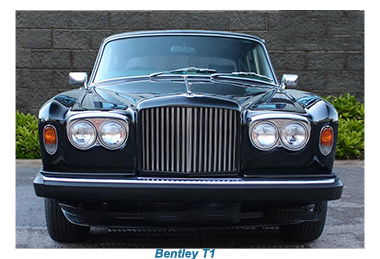 Instead, a monocoque shell was adopted, with independent suspension all round to provide the best combination of ride and handling from the lighter machine.
Instead, a monocoque shell was adopted, with independent suspension all round to provide the best combination of ride and handling from the lighter machine.
The steel monocoque derived much of its strength from longitudinal members formed under the door sills, linked by a combination seat and wheel arch structure at the rear and scuttle and bulkhead at the front.
The TI’s roof was primarily stressed, making the vehicle’s complete structure with its frame much stiffer than most other British production cars, in fact, second only to the outstandingly strong BMC 1800 shells.
The TI’s, sub-frames were attached at front and rear to carry the suspension, as well as to keep noise and road-shock level to a minimum.
![]()
The sub-frames were insulated from the body by `Vibrashock' steel-wire cushions specially developed for the task by Delaney-Gallay, specialist developers of industrial rubber products.
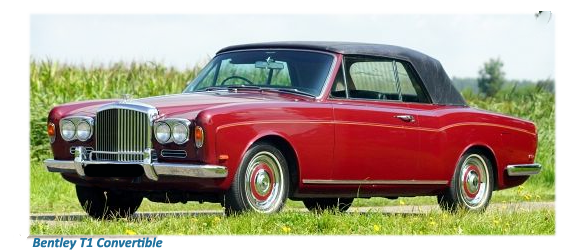 Disc brakes were also fitted all round, with dual circuits and a sophisticated 'fail-safe' system of self-levelling suspension, with the Bentley T1 set up to provide a firmer, more sports-like ride.
Disc brakes were also fitted all round, with dual circuits and a sophisticated 'fail-safe' system of self-levelling suspension, with the Bentley T1 set up to provide a firmer, more sports-like ride.
The Bentley T1 and its Rolls-Royce clone remained in production for twelve years, during which time it went through any number of development changes to keep the model up to date.
Over the length of this period the Bentley moved increasingly into the shadows of its Rolls-Royce counterpart, always the better seller of the two,reaching a ratio that rose as high as ten to one before both models were discontinued in 1980.






